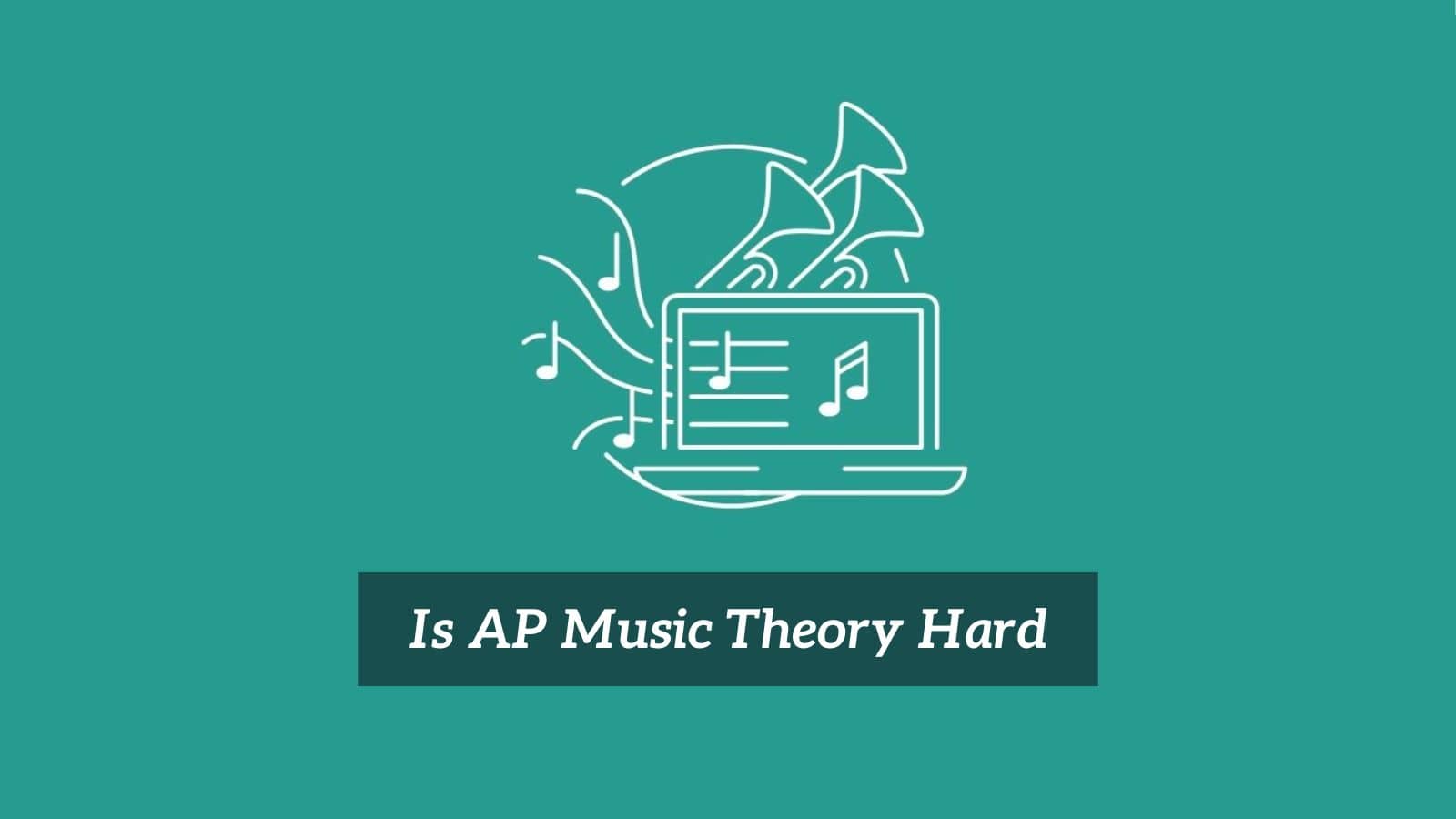
What sets the AP Music Theory Exam apart from others is the practical application of your skills—you’re not regurgitating facts or writing an essay that will impress the examiners.
You can prepare for the exam and achieve a good score with enough practice. The point of the AP Music Theory exam is not to scare you but to test your skills and help you become a well-rounded musician.
Is AP Music Theory Hard?
What is covered in the AP Music Theory Exam?
The test is closely related to the material covered in the AP Music Theory Test to the material you would have studied with your teacher. It tests the aural and written skills they taught you in class.
They divide music theory courses into 8 primary modules, as listed below and taken from the AP Music Theory Course and Exam Description:
- Music Fundamentals I: Pitch, Major Scales, and Key Signatures, Rhythm, Meter, and Expressive Elements
- Minor Scales and Key Signatures are part of Music Fundamentals II.
- The third unit is Music Fundamentals III: Triads and Seventh Chords.
- Unit 4: Harmony and Voice Leading part I: Chord Function, Cadence, and Phrase
- The second part of unit 5 is about harmony and voice leading.
- Embellishments, Motives, and Melodic Devices are part of Unit 6.
- Unit 7 covers harmony and voice leading and the secondary function of the IV-chord
- Modes and Forms are covered in unit 8
What Are, Potentially, the Hardest Parts?
AP Theory differs from other courses—you must apply your knowledge in practical situations—this depends on you and what you find hard. We’ll look at five of the hardest parts most students struggle with below.
1. Aural Skills: Sight-Singing
Most students sometimes struggle with the aural part of the test because we sometimes neglect aural development skills during music training or lessons. Most students agree that sigh-singing and harmonic dictation are the most troublesome parts of the exam.
The point of this is to learn how to read music and “hear” it inside your head and to know what it “sounds” like when you look at a score.
They show two written musical snippets to students. One will often be on the bass clef and the other on the treble clef. (The alto and tenor clefs are not thoroughly covered in this exam.)
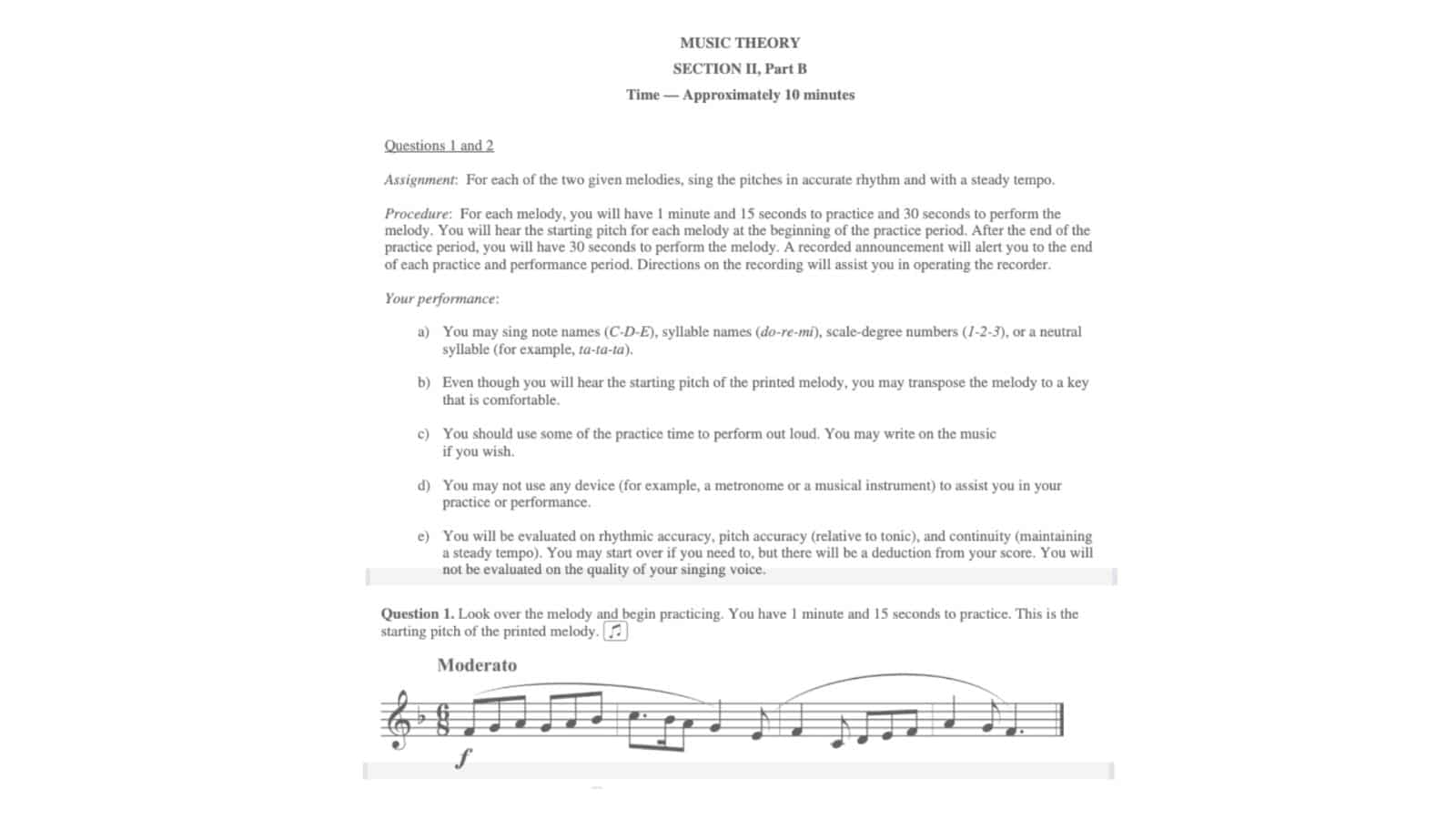
Listen to an example and student response that received 8 points.
2. Aural Skills: Listening and Identifying
Listening skills are crucial for musicians to identify musical elements and know what happens in a score.
A substantial percentage of this exam is auditory, which means you will have to analyze both melodic and rhythmic components of music to test students’ abilities in this course. The Multiple-Choice Section will include audio stimuli, which you can find here.
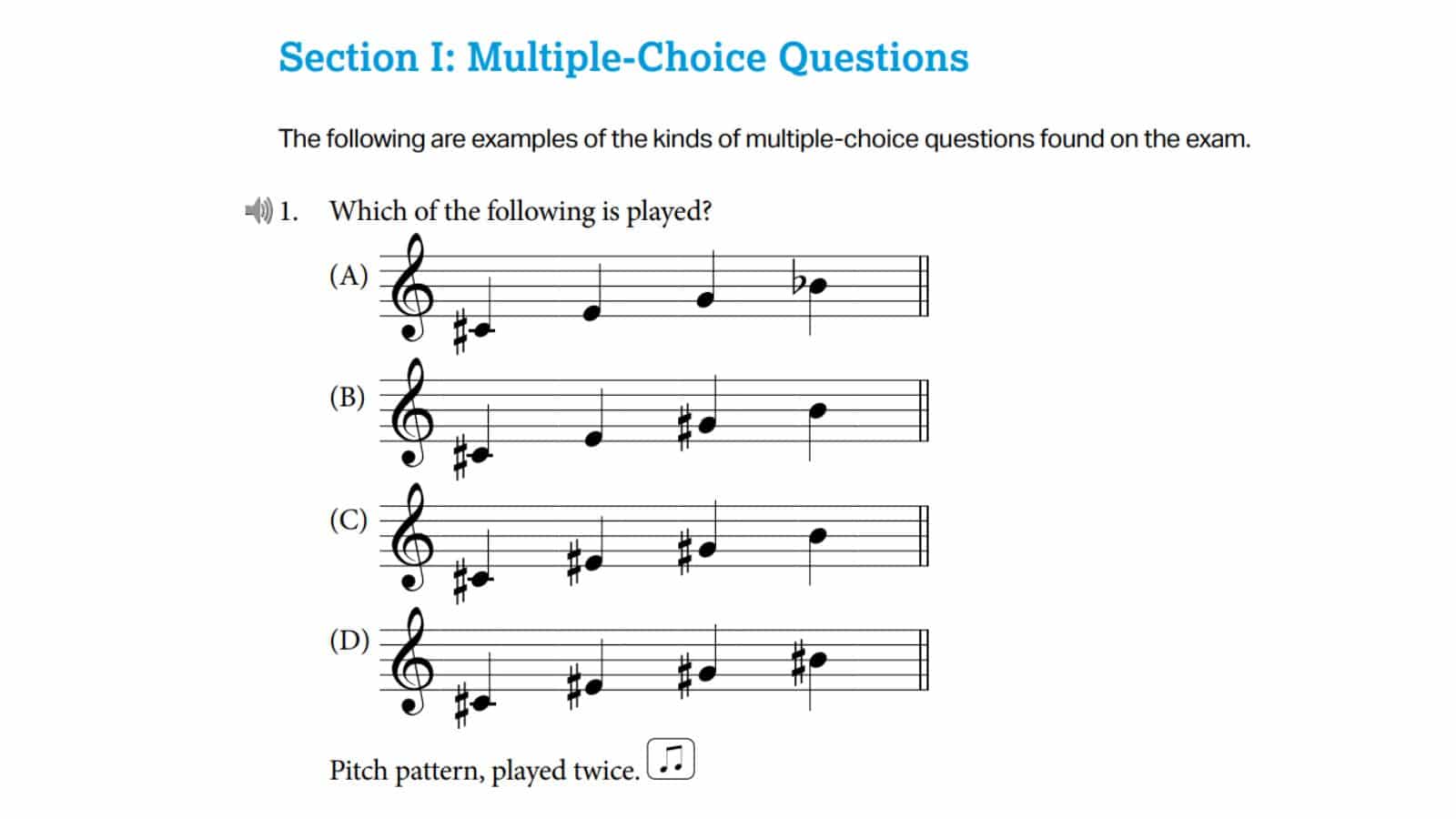
Another crucial part is identifying musical elements and progressions in a musical score. You can listen to the audio samples for questions 3–5 here.
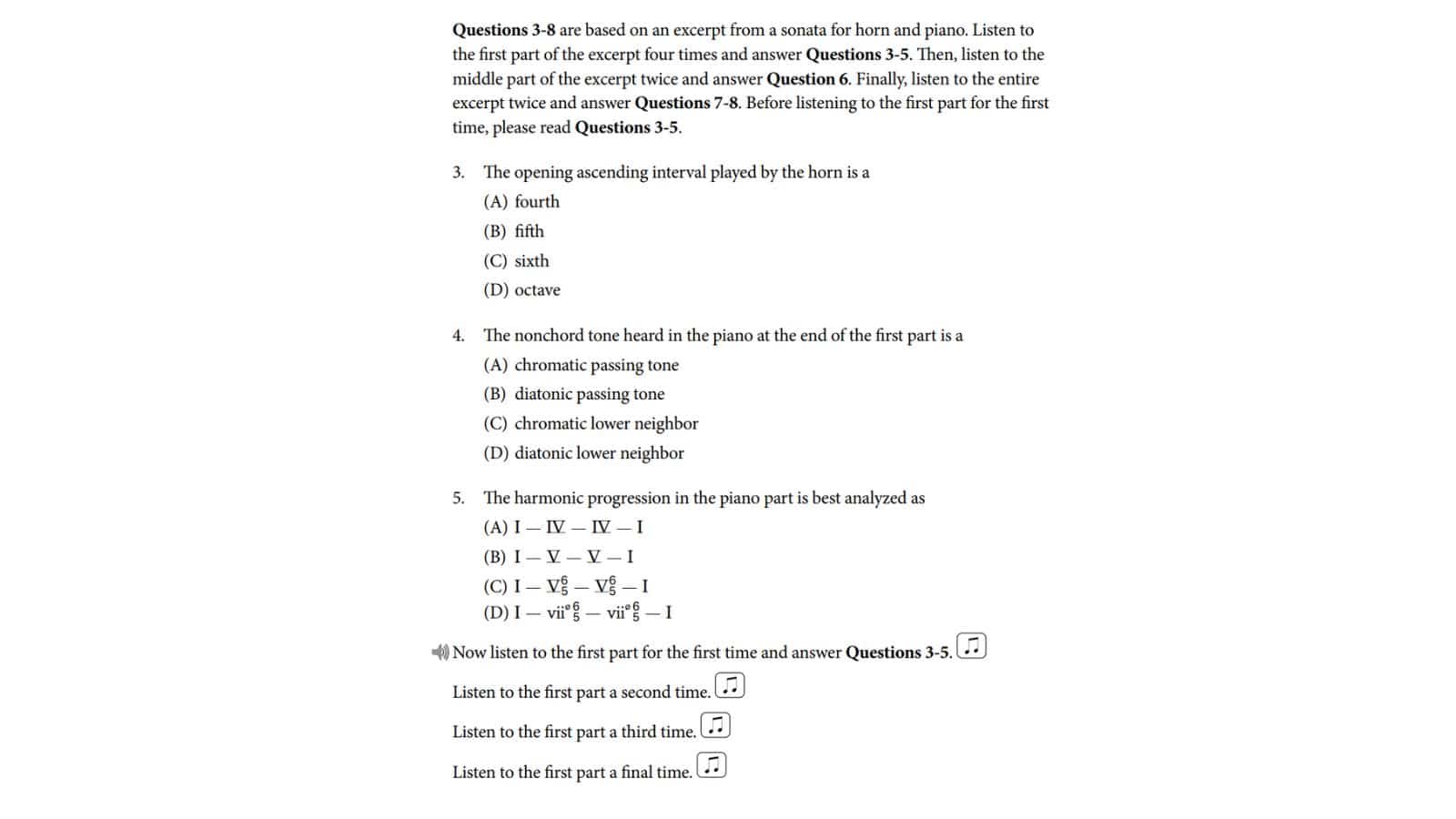
3. Aural Skills: Harmonic Diction
The starting pitch is indicated on a staff without a stem because the candidate must identify the rhythm after hearing the listening prompt. A tune is played three or four times.
This will help you learn how to write down the music you hear in your head when you compose or when you want to transcribe a song to play.
Candidates have between 5 and 8 minutes to write down the exact melody of the tune they heard. You can listen to the audio sample in the third entry (Music, Question 1).
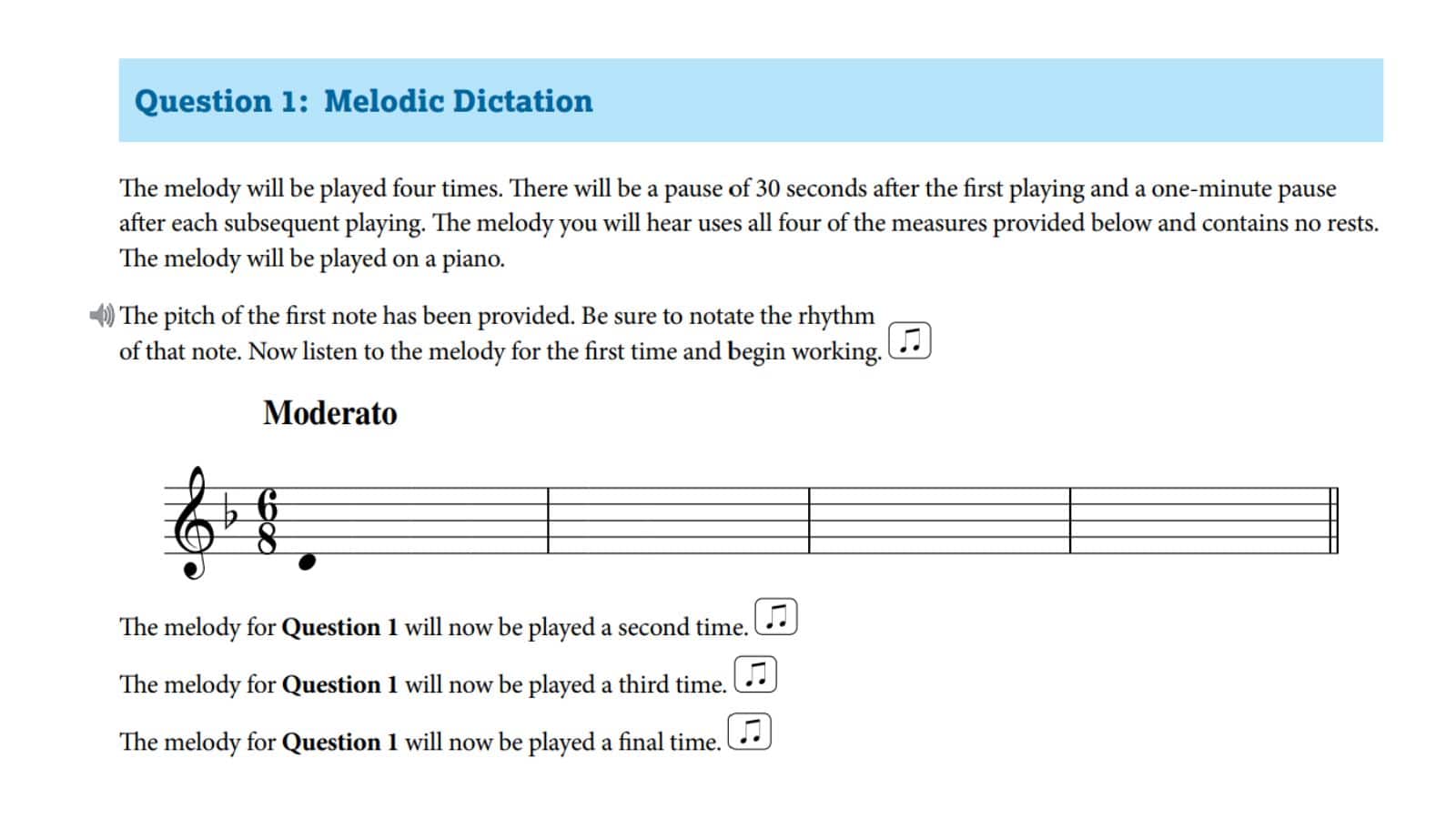
On a staff, students are allocated the starting pitch. This note will not have a stem since students must supply the exact rhythm after hearing the dictation instruction.
Following that, a tune is performed three to four times. Students will have 5–8 minutes to write down the performed tune on the staves given. Below is the correct answer:
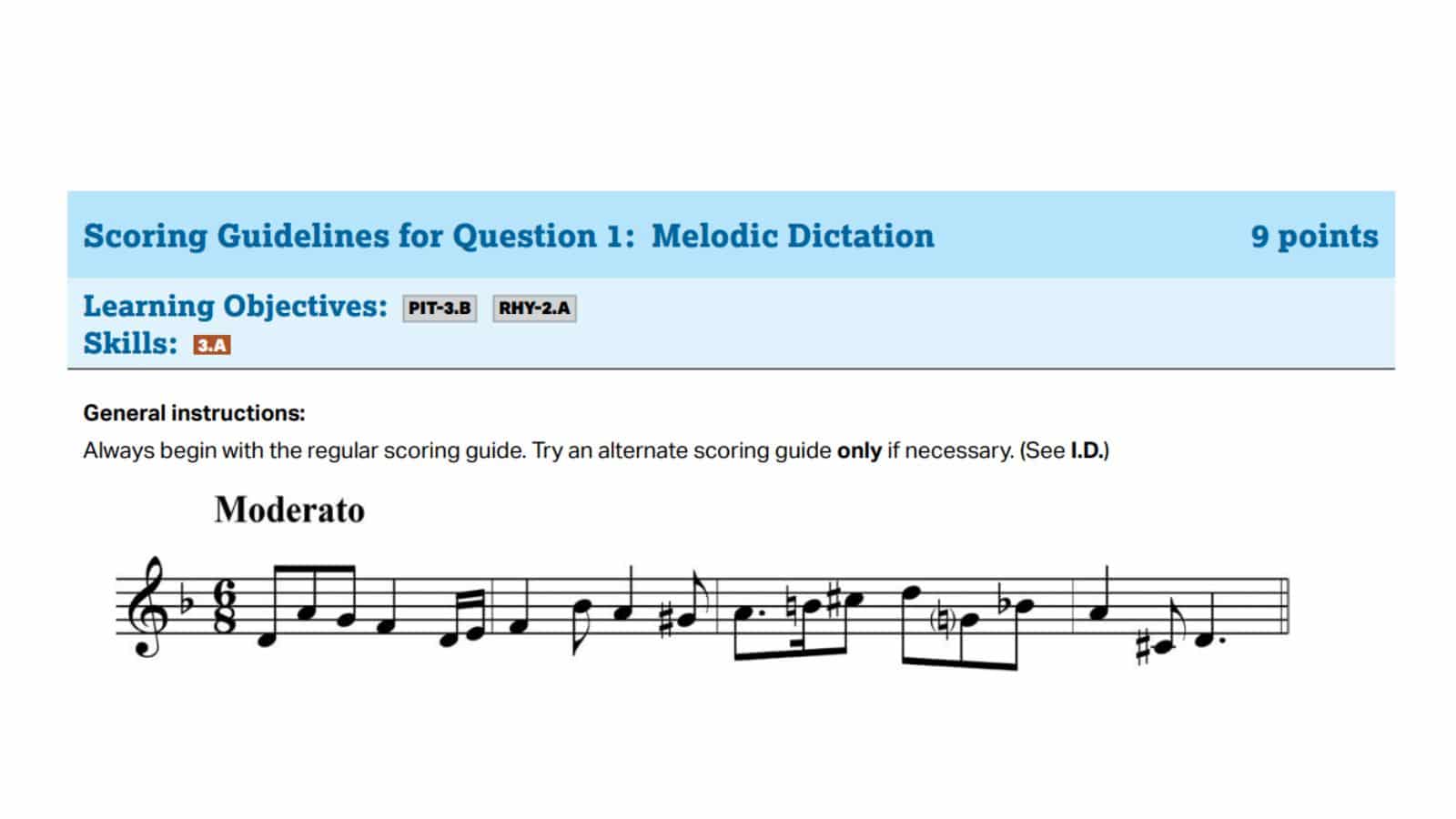
These are the criteria examiners will use:
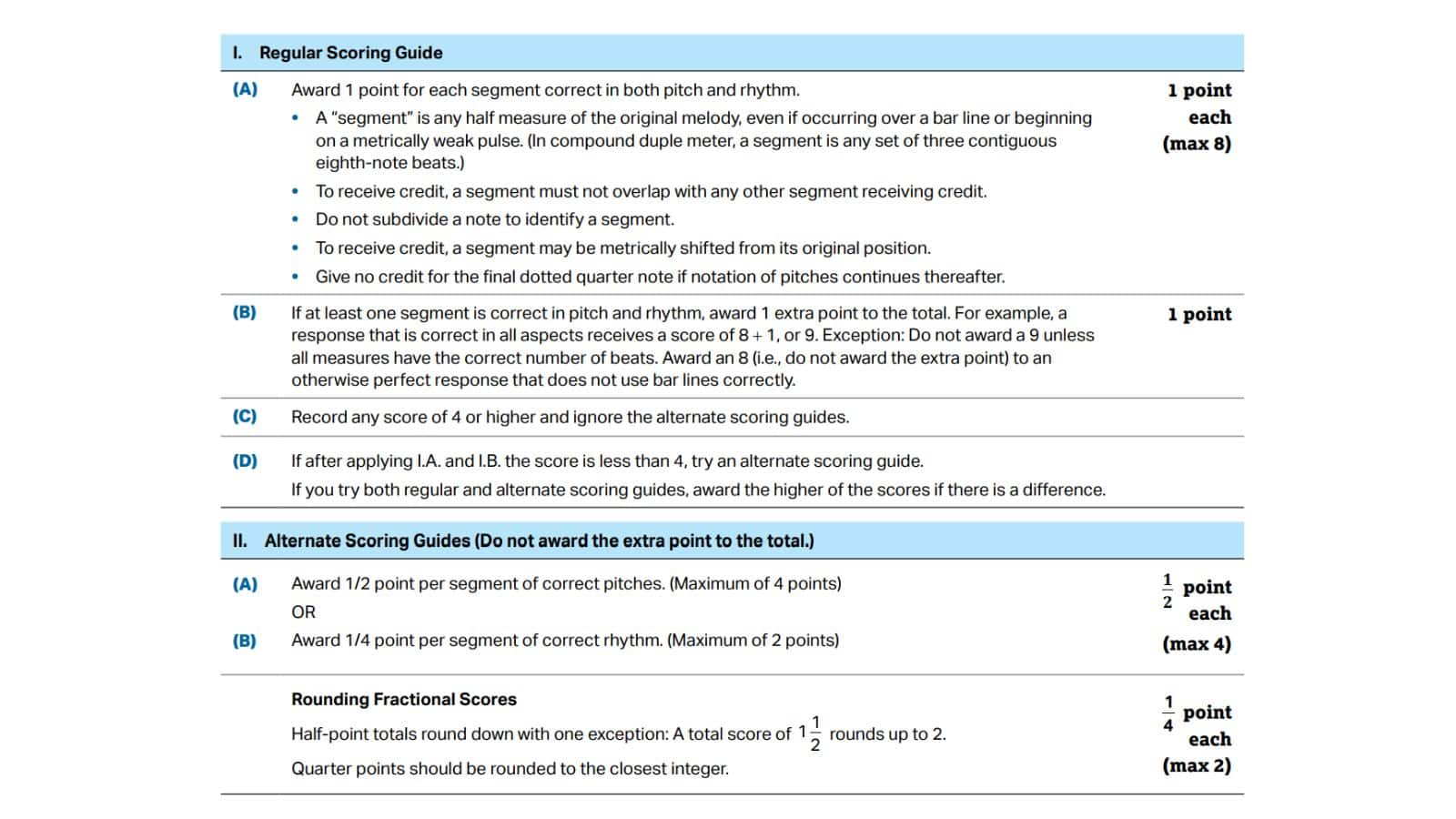
4. Part-Writing: Figured Bass
You’ll receive a blank staff, apart from the first chord and the key signature. Your task is to fill in the rest of the notes using proper voice-leading techniques, add Roman numerals, and realize the figured bass notation.
This is an exceptionally important skill for students who want to study Baroque music at a university.
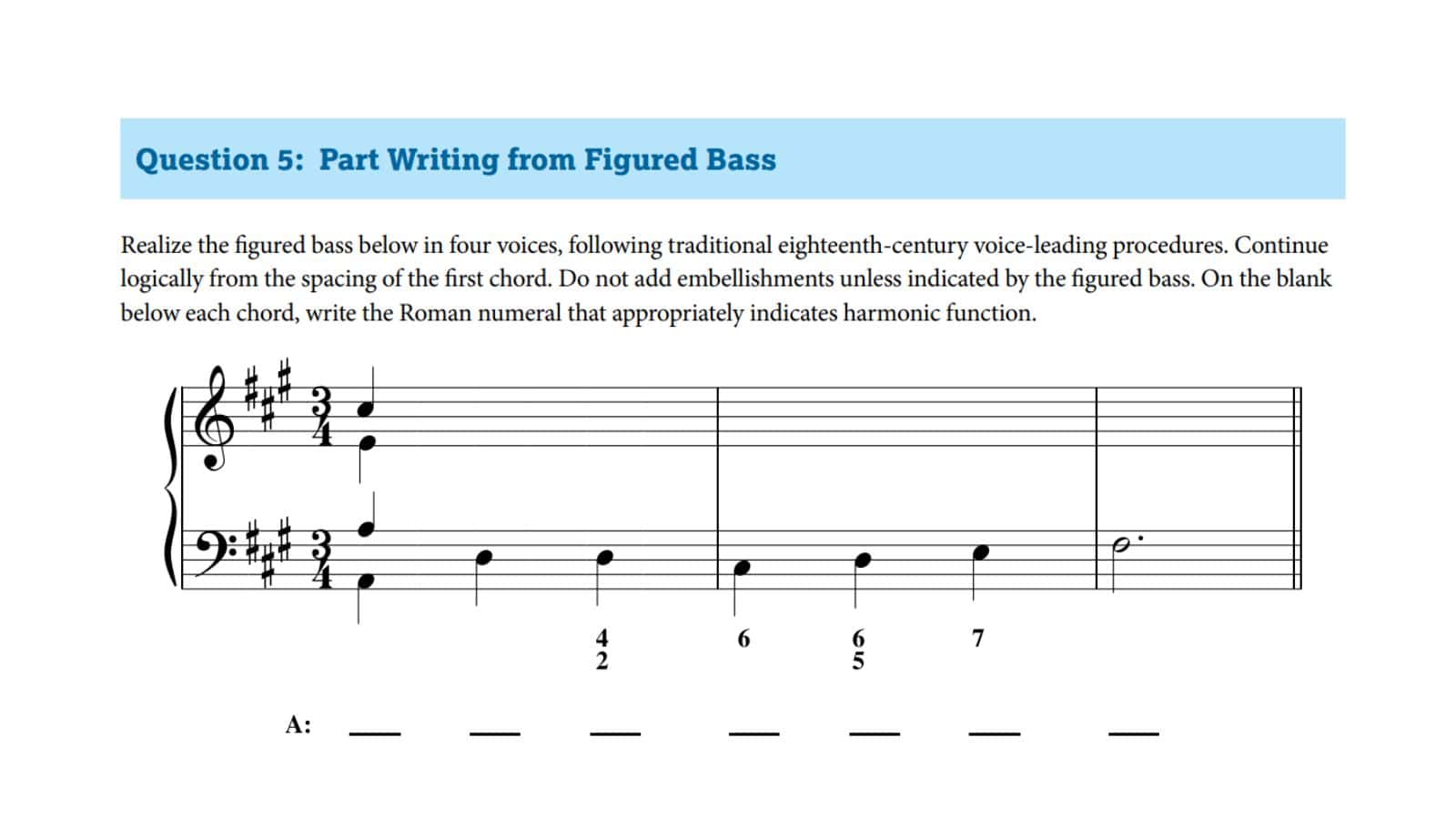
Below is a typical response answer:
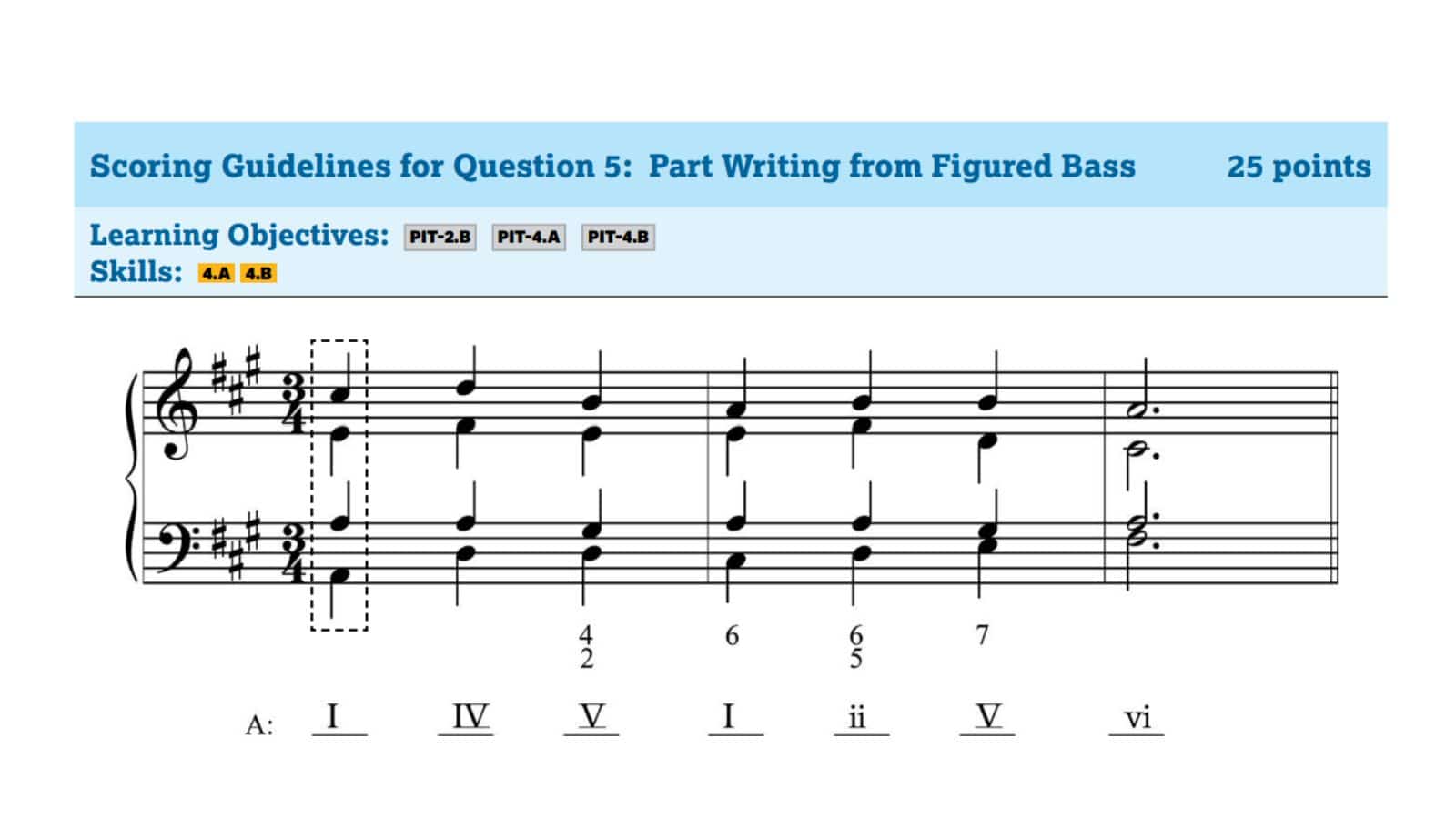
5. Writing: Given Roman Numerals
The process is reversed, and now the Roman numerals are provided. You must harmonize the chords in four parts on the staff. Again, an essential skill to understand the fundamentals of proper voice-leading, the relationship between chords, and developing your harmony skills.
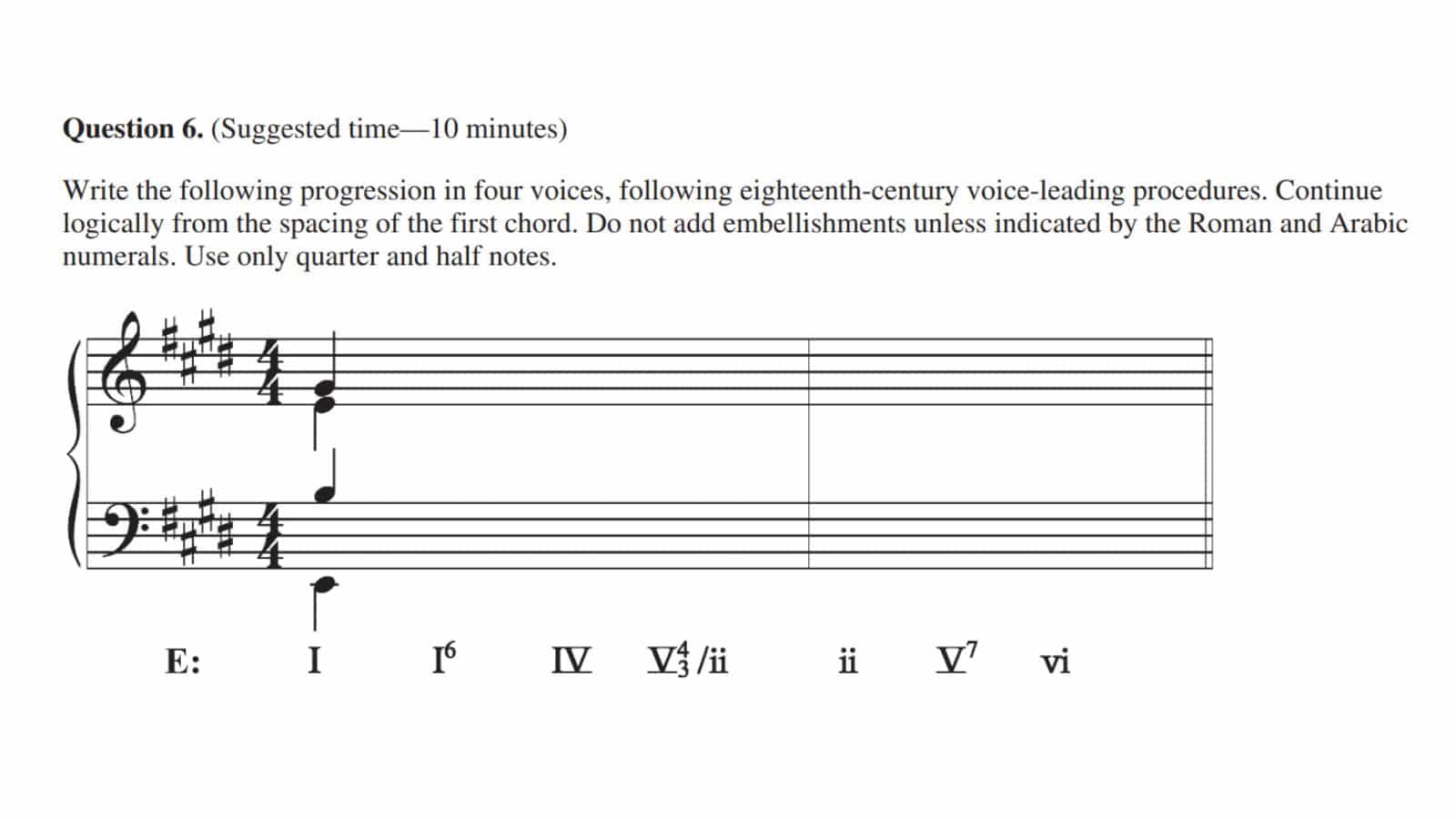
The response below would have received 18 points. There are other correct answers as well.
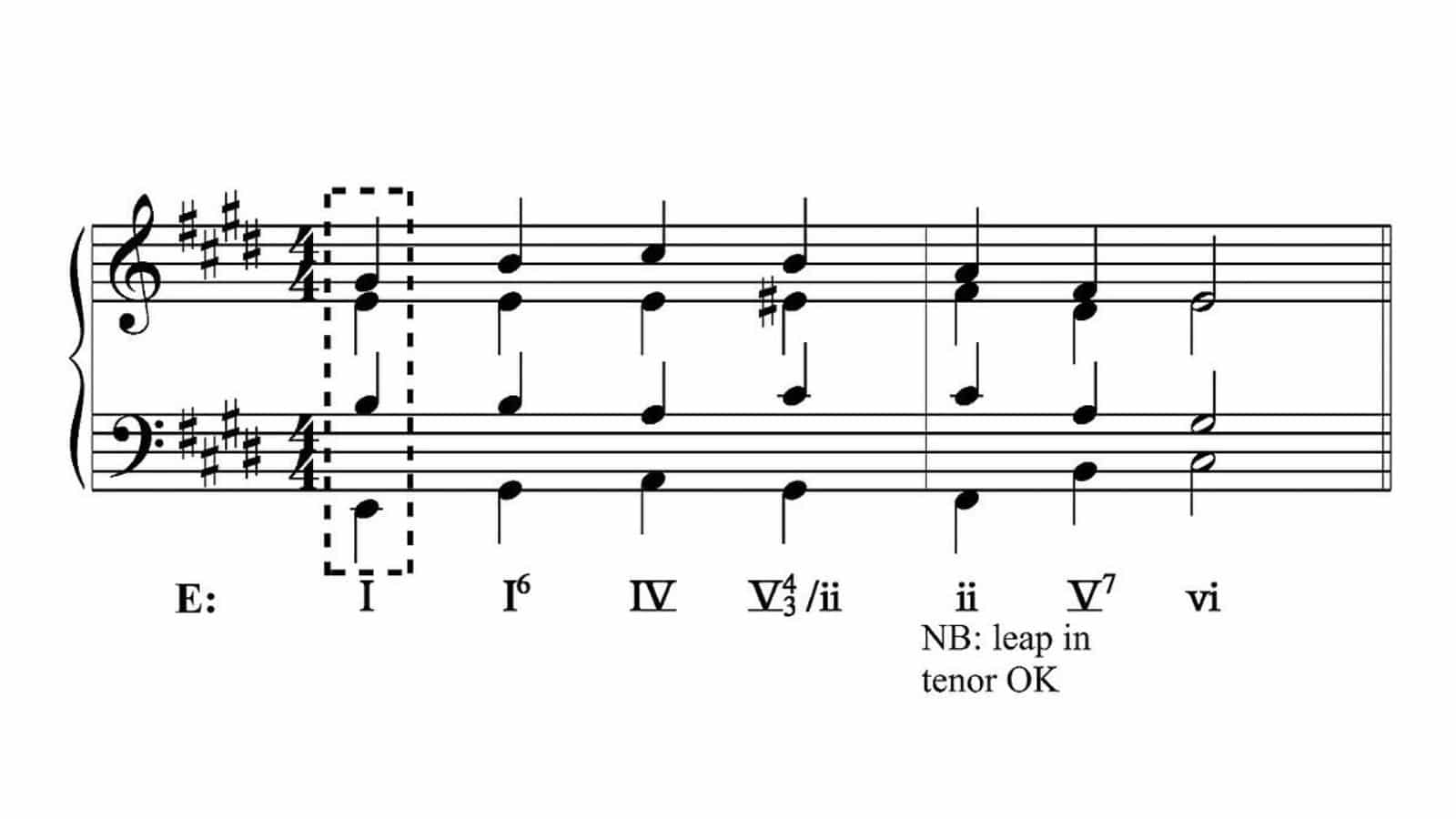
Why Should You Take the AP Music Theory Exam?
High school students who aspire to attend a college or university music program will profit from the AP Music Theory Test.
AP Music Theory will give you the grounding you need to sharpen and practice your music skills and help you understand writing techniques and the underlying structure of the music. An informed musician can make better performances because they understand their musical score.
Conclusion
As with everything in life, what you put in is what you will get out. If you work diligently and spend time practicing and developing your skills, you can rest assured that you will get a good grade on the test.
Committing to the development of your skills as a musician will help you become a well-rounded performer and help you enjoy making music even more. Be sure to check out the resources provided by the Exam Board when you prepare for your exam.
